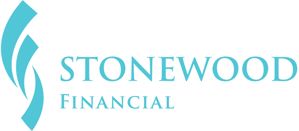Do you ever feel like your pipeline is stuck? You know why prospects need to take the next step, but for some reason, they don’t seem to have any urgency to want to meet, send you their statements, or even make a decision on the recommendations that you’ve worked so hard on to help them reach their financial goals.
Kevin Brady, a former U.S. Representative said, “Urgency creates action.”
Therein lies the problem; most advisors/agents don’t have a well-thought-out process for creating urgency in their sales pipelines and for maintaining the momentum!
Let’s take a look at just a few examples of creating urgency, in each stage of the pipeline and how one advisor did just that.
Stage 1: The Initial Contact
One of the hardest things to do is to get prospects to be interested in wanting your help. The reason is that they haven’t developed a level of trust with you, not yet. In addition, there are several things that can slow down momentum at this stage.
Take Peter A., a fifteen-year veteran financial advisor and coaching client of mine who found that after receiving twenty-one referrals in just six weeks, he had only converted three people from prospects to clients. Unfortunately, many of these new referrals were stuck at The Initial Contact Stage because when he would reach out to them, many of them did not respond. And, when he did speak with those who would respond, he wasn’t giving them enough of a benefit (or multiple benefits) for wanting to meet for a first appointment.
So, we developed his initial contact script by using the Framing the Conversation process, which has four steps: intro, the reason for my call, three benefits, and close. After role-playing this process and how to handle the objections, he was moving prospects to the next stage.
Stage 2: The First Appointment
It is one thing to be able to set the first appointment but it’s another to show value during the first appointment by finding the prospects’ need/s and filling them. If you can’t show your value then they don’t need you. However, if you can easily do so, they can’t wait for your help!
Peter’s challenge during the initial contact had been that he didn’t show value. Rather, he recited the company commercial trying to get the prospect to see (what he perceived as) his value, which was the status of the company he worked for.
What I recommended was that he learn how to ask better questions with a process called S.P.I.N Selling to get the prospect to open up about their situation/s, problem/s, implications of not fixing the problem/s, and the value of receiving his solution/s. He did this and it didn’t take long before he created the urgency needed for the prospect to want his recommendations in the next stage of the pipeline.
Stage 3: The Closing Appointment
There is a multitude of things that can slow down or even stop the sales process during the closing appointment. Some examples are as follows:
-
The prospect not understanding why they should buy
-
The prospect not fully understanding the product itself
-
The prospect giving the advisor objections
-
The advisor not knowing how to overcome them
So, we worked on all of these challenges by using a technique that I developed called The Question Path Exercise, which takes the prospect down a series of questions to come to the conclusion that they want to buy a product or service and gives them the three most important benefits that they need.
This product or service was exactly what Peter would show the prospect in his recommendations. As a result of this preparation, he increased his closing ratio and moved to the next step.
Stage 4: Getting Referrals
Getting referrals is never an easy task because most clients are asked for referrals the wrong way, which is all about the advisor wanting help to grow their business. Peter was no exception, he had been doing it wrong for years until I taught him The Client-Centered Referral Dialogue, which helped his new clients determine the value that they were getting from his products/services along with wanting to help people that they love and care about receive the same level of service.
Why Creating Urgency Works
The reason why creating urgency works is that it’s a way of being proactive instead of reactive to guide a prospect into recognizing they could benefit from your expertise. When you use all of the previously mentioned strategies, along with several others that I explain in The Advisor Solutions Podcast Episode #53, Creating Urgency and Maintaining the Momentum, you will find that they become a natural part of your sales process and your clients can’t help but want to take move forward with your recommendations.





.png)
.png)





